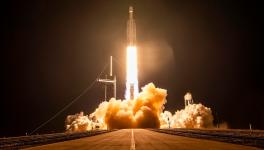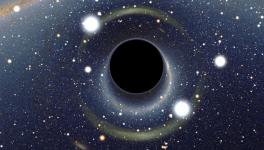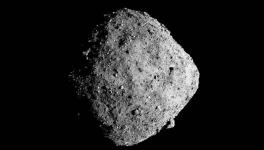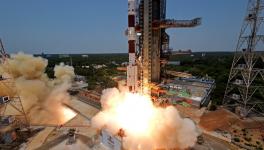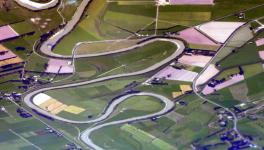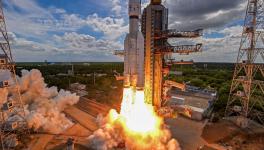Asteroid Bennu Contains Water, Carbon
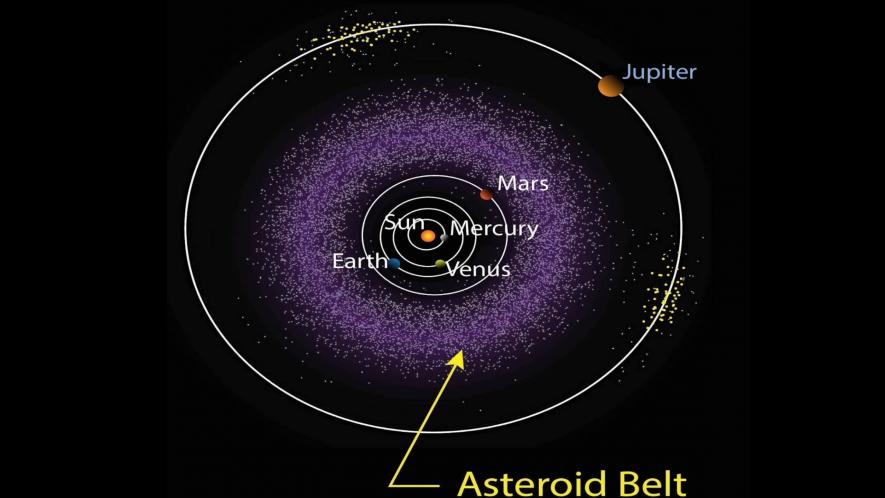
The Asteroid Belt of our Solar System. Image taken from NASA and used as representation only.
In October 2020, National Aeronautics and Space Administration’s (NASA) ORISIS-Rex Spacecraft successfully landed on the surface of Bennu, the asteroid orbiting in a not-so-far space from Earth, and Bennu’s existence was found in 1999.
The aim of NASA’s asteroid mission was to collect dust and rock samples from Bennu’s surface and the samples collected have been analysed in laboratories. Scientists analysed the samples only last month.
The samples contained carbon and water, which are amongst the building blocks of life in Earth. A NASA release on October 11 said that the “4.5-billion-year-old” asteroid Bennu samples contain high carbon content and water.
NASA administrator Bill Nelson was quoted in a release as saying, “The OSIRIS-REx sample is the biggest carbon-rich asteroid sample ever delivered to Earth and will help scientists investigate the origins of life on our own planet for generations to come.”
THE BENNU SAMPLE
The samples include clay minerals and water molecules were trapped inside their crystals, writes Alexndra Witze in an article about the findings in Nature. Importantly, the present findings are from the dust and pebbles present in the outer surface of the sample canister and the scientists are yet to analyse the main samples inside the canister, as Witze writes.
Within the first period of the analyses, scientists scanned the samples by electron microscope, infrared measurements, X-ray diffraction and chemical analysis. The X-ray computed tomography CT scan used to produce the 3D computer model of the particles in the sample highlighted its diverse interior. “This early glimpse provided the evidence of abundant carbon and water in the sample,” the NASA release says.
According to experts, the carbon-rich material and the presence of water containing clay minerals are just the beginning hinting stunning revelations further. NASA says the scientists will continue with characterising the samples for next two years.
WHY ASTEROID RESEARHCES ARE IMPORTANT
Asteroids are born because of breakaway events from a larger parent body during cosmic collisions in the asteroid belt of the solar system. Asteroids are rocky remnants that arose during the early periods of the formation of the solar system some 4.6 billion years ago. Even if asteroids orbit the Sun like the planets, they are not considered true planets.
The Asteroid Belt is the region between Mars and Jupiter and the region where most of the asteroids are found.
The materials present in an asteroid can contain signature of its parent body, and studying them can reveal the still unknown facts about our solar system. Bennu also has some such signatures that its parent body contained.
Each asteroid has its own journey and own story to tell about its evolution over time. Collecting a sample directly from such an asteroid offers a unique glimpse at the rocks and dust that were left over during the solar system formation some 4.5 billion years back. Bennu is also expected to offer such glimpses.
The water that scientists have discovered inside the clay mineral crystals of the Bennu samples could be ancient that could have originated from the dawn of the solar system.
“As we peer into the ancient secrets preserved within the dust and rocks of asteroid Bennu, we are unlocking a time capsule that offers us profound insights into the origins of our solar system,” Dante Lauretta, OSIRIS-REx principal investigator, University of Arizona, Tucson, was quoted as saying in a statement.
SOME PREVIOUS ASTEROID MISSIONS
Although human exploration into the space has a robust history of about half-a-century, asteroid missions are relatively newer.
The first landing was way back in 2001 when NASA mission NEAR Shoemaker landed in the near-earth asteroid Eros. It was basically designed as an orbiter but improvised to make a landing and could transmit from the asteroid for 16 days.
Then came the Hayabusa mission, led by Japan, to sample the asteroid Itokawa. The landing was in 2005. Japan got another asteroid mission, the Hayabusa 2, to sample asteroid Ryugu and could return sample from it.
Get the latest reports & analysis with people's perspective on Protests, movements & deep analytical videos, discussions of the current affairs in your Telegram app. Subscribe to NewsClick's Telegram channel & get Real-Time updates on stories, as they get published on our website.









